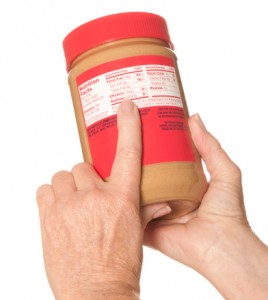Food Label ‘Makeover’ To Fight Obesity
 Do you read food labels while you’re grocery shopping, looking for grams of sugar and fat? If so, you may soon notice some changes – the first in 20 years –designed to reduce obesity and its related diseases among Americans.
Do you read food labels while you’re grocery shopping, looking for grams of sugar and fat? If so, you may soon notice some changes – the first in 20 years –designed to reduce obesity and its related diseases among Americans.
The updated labels are part of the White House’s ongoing fight against obesity in Americans. Though a recent survey found that the obesity rate among American children aged two to five dropped dramatically over the past decade, the rate remains constant among older Americans and has risen in women aged 60 and older. In the United States, one-third of adults and 17 percent of youth are obese, which is tied to a variety of serious medical conditions, including diabetes, heart disease and some cancers.
RELATED READING: Add This Super Fruit To Your Diet To Lower Cholesterol
How To Read New Food Labels
On the updated labels, a food’s calorie count would be more prominently displayed with larger, easier to read print. Those calorie counts would be related to the realistic serving size for the food, a change that could double the calories per serving size for some food and lower it for others. The law currently says that the serving sizes listed on packages should reflect what people generally eat, but that’s often not the case. Under the proposed changes, consumers would have a better idea of the calories, fat and sugar they’re actually consuming in the average serving.
For products expected to be consumed in multiple servings, such as family sized bags of potato chips, the food labels will indicate both the information for the average serving and for the entire package.
The labels would also indicate the food’s added sugar content, a nod to growing concerns about the impact of added sugars in the diet. Research has found that added sugar in foods like soda and cereals increase the risk of heart disease along with upping the risks of obesity.
RELATED READING: New Research Uncovers Toxins Lurking In Your Packaged Food
Keeping Track Of Added Sugar
Current food labels are required to list the amount of sugar in a product, but they don’t have to specify the amount that is added sugar. For example, fresh fruit has naturally occurring sugar, but many products contain added sugar from the addition of products like high-fructose corn syrup – as the labels currently stand, consumers have no idea what amount of sugar in a product is naturally occurring and what amount is added.
Companies would also have to include vitamin D and potassium in the listings of vitamins and minerals available in foods; right now, they are required to include vitamins A and C.
The proposed changes were announced for the Food and Drug Administration (FDA) by Michelle Obama, whose “Let’s Move” campaign has been a key part of her time as First Lady. “You as a parent and a consumer should be able to walk into your local grocery store, pick up an item off the shelf, and be able to tell whether it’s good for your family,” Ms. Obama said of the push for updated labels.
The proposed changes would affect most processed foods, with the exception of some meat, poultry, and processed egg products, which are regulated by the Department of Agriculture. But don’t expect to see the changes right away – the FDA expects they’ll take about three years to take effect.
- DON'T MISS
- Weight Loss Diets: How To Make Them Work
- When Fast Weight Loss Becomes Unhealthy
- Top Five Reasons You Should NOT Go On A Diet This New Year
- Women Obesity and Pregnancy Complications
- Frankie The French Fry Hatches A Plan
- Mum you are KILLING me
- Help! My Kids are Overweight!
- Weight Loss And Body Fat: Are You An Apple or Pear?
- Exercise Intensity Vs. Duration
- Big “Buts” Sabotage Weight Loss, Health, and Fitness (Part 1 of 12)




